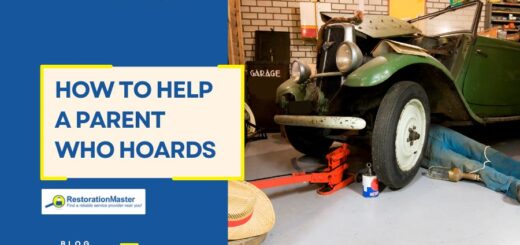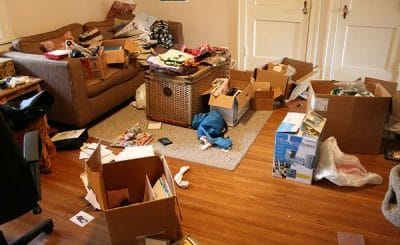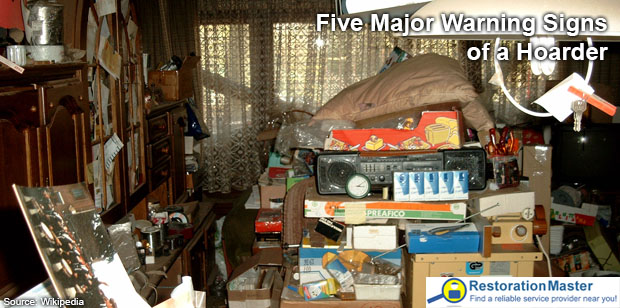Common Misconceptions About Hoarding
Popular reality TV programs have brought hoarding to the public eye, but they often perpetuate misconceptions about hoarding disorder rather than clarifying its true nature.
Hoarding Disorder is a recognized mental health condition marked by an overwhelming difficulty in parting with possessions, regardless of their actual value. Unlike what is often portrayed on television, this disorder goes beyond mere disorganization or clutter. Research has revealed that individuals with hoarding disorder exhibit distinct differences in brain patterns compared to those without the condition. These differences affect how they process and respond to the emotional significance of their belongings.
For instance, studies using brain imaging techniques have shown that people with hoarding disorder may have heightened activity in areas of the brain associated with emotional processing and decision-making when confronted with the idea of discarding items. This suggests that their difficulty in letting go is not simply a matter of choice but is deeply rooted in neurological and psychological factors. Understanding these underlying differences can help in addressing the disorder with greater empathy and effectiveness.
Common Myths About Hoarding
How much do you really know about hoarding? Let’s understand it step by step.
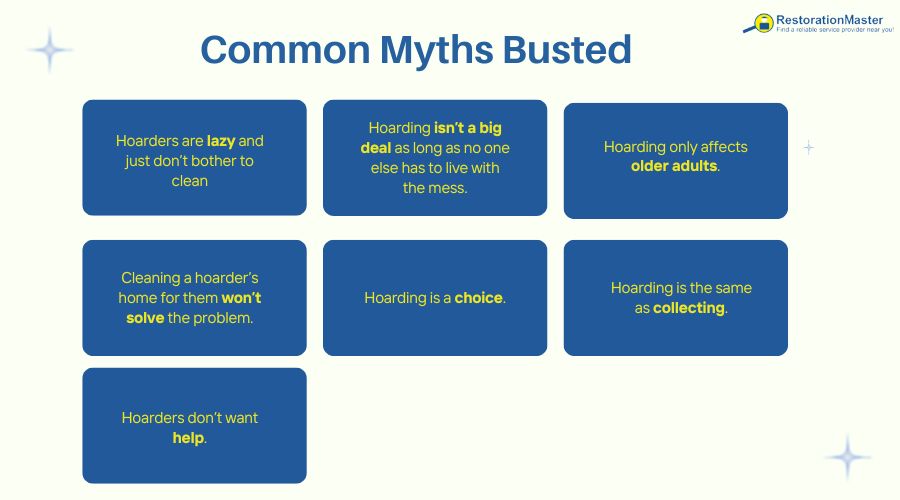
Misconception 1: Hoarders are lazy and just don’t bother to clean
False. Some hoarders go to great lengths to hide their disorder. They have distinct cognitive differences related to spatial reasoning and problem solving that makes deciding what to do with their possessions more difficult than it should be.
Misconception 2: Cleaning a hoarder’s home for them won’t solve the problem.
True. Deciding what to do with a hoarder’s possessions will only make them feel helpless and resentful. Even if you clean with their participation and permission, without new skills, the hoarder will not be able to maintain the newly organized environment.
Misconception 3: Hoarding isn’t a big deal as long as no one else has to live with the mess.
False. Hoarding is more than simply excessive clutter. When taken to extremes, hoards can harbor food waste, animals, fecal matter, and more. These can cause serious health problems for the hoarder and anyone who enters the home.
Understanding the mental illness behind hoarding is the first step in helping a friend or loved one with the disorder.
Misconception 4: Hoarding is a Choice
False. Hoarding is not a matter of choice but is driven by underlying psychological issues such as anxiety, depression, or obsessive-compulsive disorder (OCD). People with hoarding disorder struggle with their behavior and often find it difficult to let go of items, even when they recognize the negative impact on their lives.
Misconception 5: Hoarding Only Affects Older Adults
False. Hoarding can affect individuals of any age, including children and adolescents. The disorder can develop at any stage of life and may be influenced by traumatic events, significant life changes, or other factors unrelated to age.
Misconception 6: Hoarders Don’t Want Help
True. Many individuals with hoarding disorder recognize their problem and desire assistance but may struggle with fear, shame, or denial. Building trust and providing support in a non-judgmental manner is crucial for encouraging them to seek and accept help.
Misconception 7: Hoarding is the Same as Collecting
False. Collecting is usually intentional and organized, focusing on specific items. Hoarding, however, involves difficulty letting go of items and can leadLead is a heavy metal that can be toxic to humans, especiall... More to severe clutter and potential hazards. Collectors typically maintain order and purpose in their collections, whereas hoarders struggle with organization and accumulate a wide range of items indiscriminately.
What Can You Do to Help a Hoarder?
First, and most importantly, be supportive. Assure your friend or family member that you are there to help them and that you are not simply going to throw away all of their possessions.
Next, work with the hoarder to come up with a cleanup and recovery plan. The plan should include two important components: the physical cleanup of the home and psychological help for the underlying mental illness that caused the hoarding.
Decide whether you or the hoarder will be able to tackle the cleanup yourselves. If the job is too large, call a reputable hoarding cleanup crew, such as Hoarding Cleanup Services. If you suspect that there may be any type of biocontamination, such as bodily fluids or live or dead animals, or moldMold is a type of fungus that grows in damp or humid conditi... More damage, do not attempt the cleanup yourself.
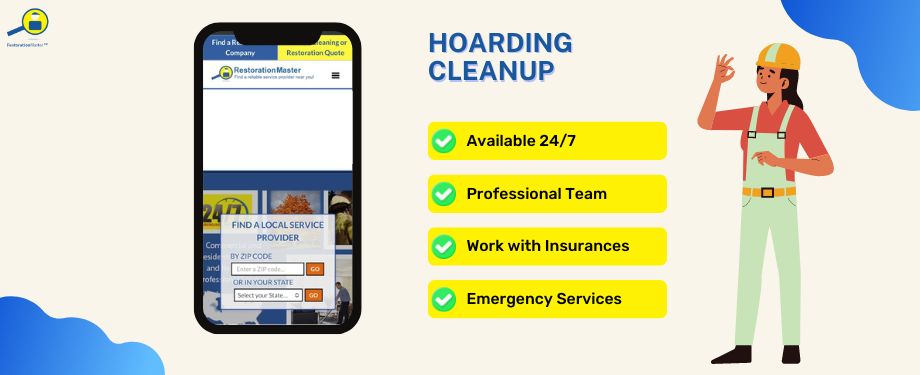
Before you hire a cleanup crew, be sure they are trained to handle hoarding situations. They should handle the cleanup with sensitivity, compassion, and respect. Bringing in a team like RestorationMaster, that specializes in hoarder cleanup, may be easier for the hoarder than trying to tackle the overwhelming mess themselves.










